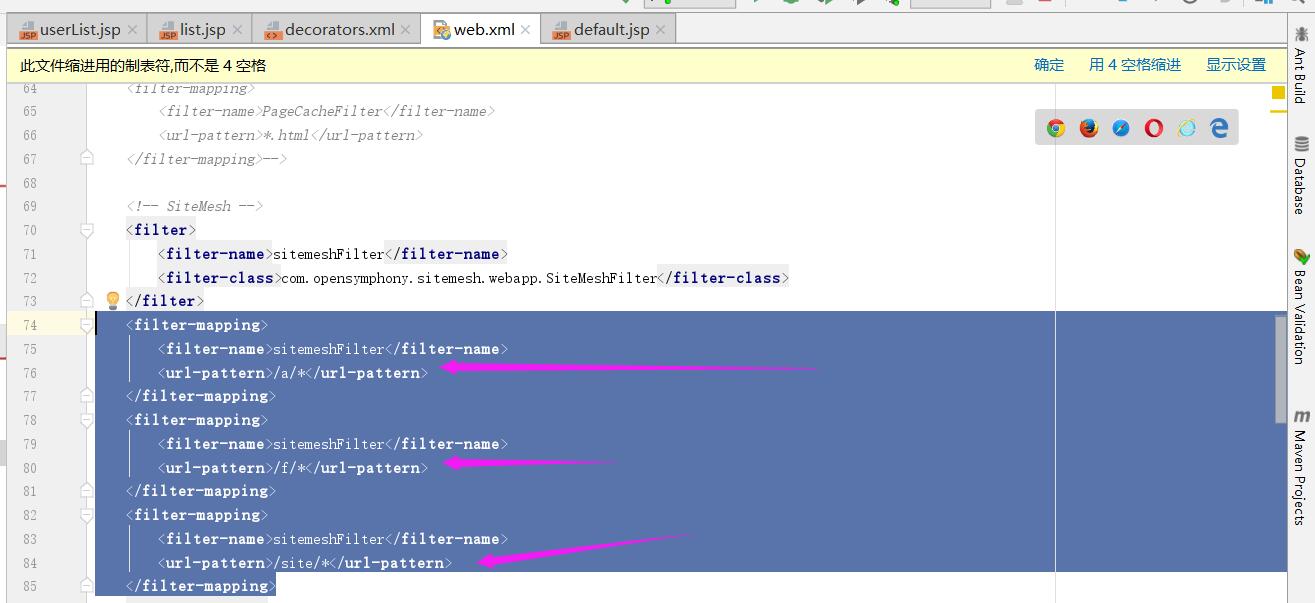1. 添加jar文件到classpath
2. 在web.xml中增加过滤器

<!-- Sitemesh -->
<filter>
<filter-name>sitemesh</filter-name>
<filter-class>com.opensymphony.module.sitemesh.filter.PageFilter</filter-class>
</filter>
<filter-mapping>
<filter-name>sitemesh</filter-name>
<url-pattern>/*</url-pattern>
</filter-mapping>
3. 在/WEB-INF中创建decorator.xml文件
<decorators defaultdir="/decorators">
<decorator name="main" page="main.jsp">
<pattern>/*</pattern>
</decorator>
</decorators>
defaultdir:指定了装饰页面的存放路径
在这里可以使用<decorator>标签配置多个装饰器
4. 另外有一个可选的sitemesh.xml文件,放在/WEB-INF目录下。如果没用,则默认读取sitemesh.jar文件中的sitemesh-default.xml文件。这个文件在jar:com.opensymphony.module.sitemesh.factory包中。
在这个文件中可以指定使用那些mapper对象来装饰页面,也可以扩展自己的Mapper类。 sitemesh自带的mapper类放在com.opensymphony.module.sitemesh.mapper包中,可以供大家选择使用。
5. 这里是今天学习备注的重点 ,com.opensymphony.module.sitemesh.mapper.PageDecoratorMapper 这个类的使用。
在sitemesh-default.xml中,可以看到已经声明了这个类,并且可以通过查阅API来获得其使用方法。
在这个文件中可以看到配置了这个类的两个属性
property.1=meta.decorator
property.2=decorator
通过查阅API可以找到,只要html文件中包含
<meta name="decorator" content="decoratorname">
<meta name="meta.decorator" content="decoratorname">
就可以应用相应的装饰器,而不必在decorator.xml中使用<pattern>来规定哪些页面使用哪些装饰器。
<decorators defaultdir="/decorators">
<decorator name="main" page="main.jsp">
</decorator>
</decorators>
6. 一点联想:
在com.opensymphony.module.sitemesh.mapper包中我看到了一个叫CookieDecoratorMapper的类,话说可以在用户的cookie中指定装饰器的名字。